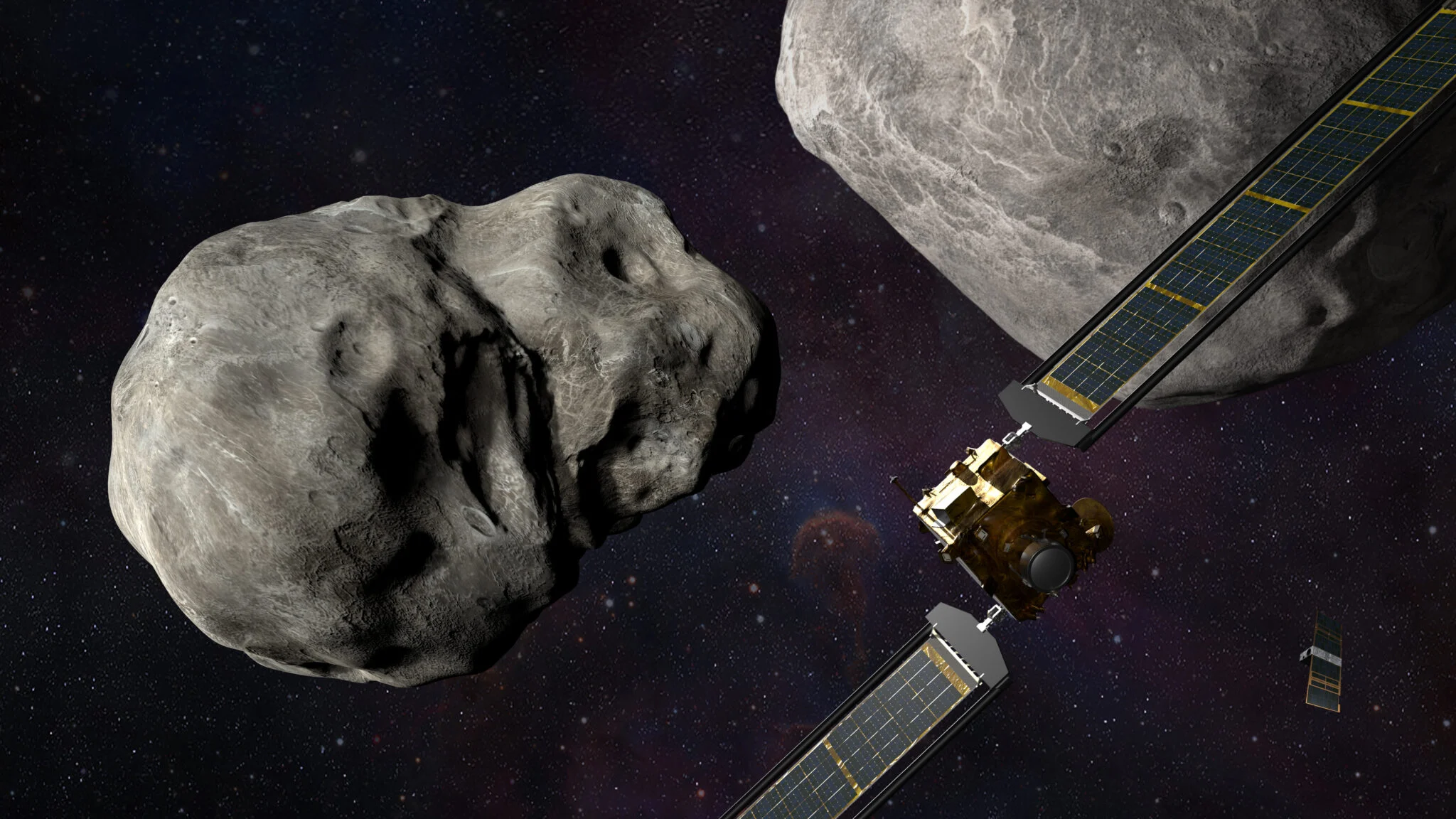Space defense, the NASA Dart probe is close to impact with the asteroid

NASA's Dart spacecraft, designed to hit a small asteroid and push it off course, is on track for impact on September 26. And the Italian nanosatellite LICIACube will take care of the test again
To avoid scenarios like the one brought to the screen by the film “Dont'Look Up” (a giant space object on a collision course with Earth), we will soon witness the world's first planetary defense test mission.
On September 26, the NASA Dart probe (Double Asteroid Redirection Test) will collide with Dimorphos, the smaller of the two asteroids in the Didymos system.
The mission's goal is to autonomously guide a spacecraft to an asteroid, in hopes of pushing it off course rather than destroying it. "Dimorphos is actually a quiet space stone, too far away to be able to think only of hurting us" underlines Repubblica . Dart will therefore have to shift its orbit a little but still in a measurable way.
Launched last November 24 from the Vandenberg base in California aboard a Falcon 9 rocket, the Dart probe carries the LICIACube satellite built by the Argotec company of Turin, in collaboration and with the contribution of the Italian Space Agency (ASI ). The Italian nanosatellite will be the eyewitness of the first piloted collision between a probe and an asteroid. This is a test that will be carried out safely 11 million kilometers from us, but which will demonstrate the feasibility of a similar operation to deflect any future celestial objects that are dangerous for our planet.
All the details.
WHAT THE NASA DART PROBE WILL DO
Dart's journey lasted over 10 months to the small asteroid Dimorphos, which revolves around the larger asteroid Didymus. The system, which is located about 11 million km from Earth, is composed of the main asteroid Didymos, 780 m in diameter, and its 160 m diameter "moon" Dimorphos which will suffer the impact of Dart at speed of about 21,000 km / h.
Dart will therefore be the first full-scale test of the kinetic impact technique for the purpose of Planetary Defense for the protection of the Earth, if in the future there are dangerous situations caused by celestial objects that intersect the Earth's orbit. In fact, it will demonstrate the possibility for a spacecraft to travel autonomously to a target asteroid and intentionally hit it to change its movement if it poses a threat to Earth. Remote eventuality but not impossible.
It will take "weeks to a couple of months" before scientists can "determine the effect we have had on the moon's orbit," a NASA researcher told BreakingDefense .
WHAT IS LICIACUBE
On board Dart there is also the Italian microsatellite LiciaCube (acronym for Light Italian Cubesat for Imaging of Asteroids), only 30x20x10cm and about 13 kilograms. It is an ASI project carried out entirely in the Argotec company in Turin. This is the first satellite built in our country to undertake a journey into deep space.
LICIACube, remaining at a safe distance, will have the task of photographing and acquiring the impact data to verify if the asteroid will deviate its trajectory.
THE ITALIAN TEAM
The scientific team of LICIACube, all Italian, includes researchers from the National Institute of Astrophysics (Inaf), the Polytechnic of Milan, the Universities of Bologna and Parthenope of Naples, the IFAC-CNR of Florence, and is coordinated by Elisabetta Dotto ( Inaf). In recent months, INAF has coordinated with the Galileo National Telescope (TNG) a campaign of spectroscopic observations of the asteroid Didymos that covers the entire rotation of the object.
NONE OF THE TWO ASTEROIDS REPRESENT A THREAT … BUT
As ASI explained, neither of the two asteroids pose a threat to Earth. However, their orbit around the Sun makes them transit close enough to our planet for telescopes to observe the aftermath of the Dart collision and calculate how effective the mission will have been in altering Dimorphos' trajectory following the impact. The variation of the revolution period of the latter around its more massive rocky companion will be measured in the phases immediately following the impact and then cumulatively for the following months and years.
In addition to what was detected from Earth, the images acquired by LiciaCube will provide unique elements acquired in situ and in the moments just after the impact, also relevant for the measurement of orbital deflection.
AFTER NASA DART TOWARDS ESA'S HERA MISSION
Finally, Dart and LiciaCube will pave the way for Hera, the European Space Agency (ESA) mission scheduled for 2024 which will have the task of performing a close flyby of the pair of asteroids, gathering key information about Dimorphos such as its mass and its internal structure, in addition to the size of the crater generated by the impact with Dart. The extra data from Hera – highlights ESA – will help transform the Dart deflection experiment into a well understood and repeatable technique that may one day be really needed.
This is a machine translation from Italian language of a post published on Start Magazine at the URL https://www.startmag.it/innovazione/difesa-spaziale-la-sonda-della-nasa-dart-e-prossima-allimpatto-con-lasteroide/ on Fri, 16 Sep 2022 13:11:24 +0000.
